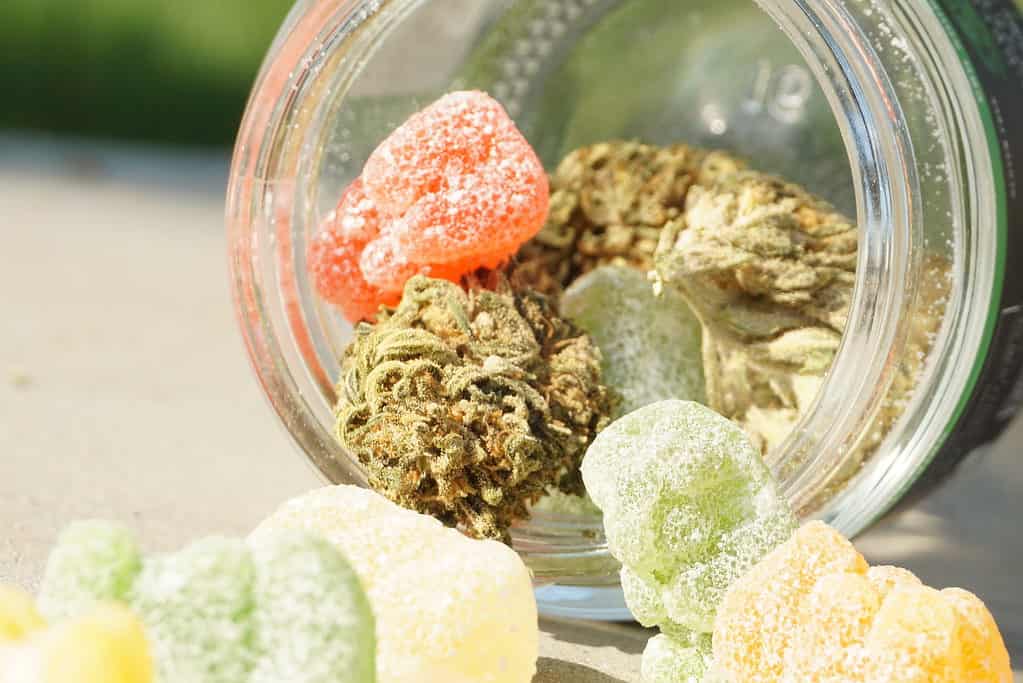
As more states legalize recreational cannabis use, the once heavily criminalized herb has now become more abundant than ever. Not only are more people using marijuana more often than ever before, but there’s also an entirely legal, tax-paying cannabis industry worth tens of billions that are catering to this market. You can buy buds but also all sorts of creatively packaged edible cannabis-related products, including cookies, chocolate bars, and gummies that look indistinguishable from sweets bought from the supermarket.
But if you purchase these kinds of products and have kids, you might want to be extra careful.
A new study out this week found that the number of young children who have accidentally ingested cannabis-laced food has surged dramatically. According to researchers at the Southern Illinois University School of Medicine, between 2017 and 2021 there were more than 7,000 accidental exposures to cannabis edibles among children younger than six, and every year this figure has been rising.
More and more toddlers are eating THC-laced food, and this could be a big problem
In 2017, there were only 207 reported cases to poison control centers across the nation, whereas in 2021 this figure surged to 3054 cases, marking a 1375% increase. More than half of these cases involved the ingestion of marijuana-laced products by two- and three-year-olds. In over 97% of cases, the incident happened at home.
“There has been a consistent increase in pediatric edible cannabis exposures over the past five years, with the potential for significant toxicity,” the authors of the new study reported in the journal Pediatrics, adding that “it is important for providers to be aware of this in their practice, and it presents an important opportunity for education and prevention.”
Even 200-pound adults can get severely intoxicated with marijuana edibles if they overeat past the recommended dose, not to mention small toddlers who can weigh a couple of times less. Of the nearly 7,000 cases investigated by the researchers, about 8% required critical care, 15% of children were admitted to non-critical care units, whereas a third visited emergency rooms.
The year 2020 was particularly problematic. As many people were forced to stay at home due to the pandemic, marijuana sales during that time increased substantially and so did the risk of accidental exposure to THC for children — who also spent more time at home as schools were closed. According to a new study, in 2020 alone, accidental exposure to cannabis accounted for more than 40% of all human poison exposure calls.
“Honestly, we knew it was increasing. I work in the [emergency department] as well as taking calls for the poison center, and so even though I was seeing more cases coming through the ER, when we looked at the data nationwide, we were definitely surprised,” said study co-author Dr. Antonia Nemanich, who works in emergency medicine and medical toxicology at Rush Emergency Medicine in Chicago.

The most commonly reported symptoms of marijuana ingestion among young children were CNS depression, tachycardia, vomiting, ataxia (impaired coordination), and agitation. In extreme situations, some patients suffered from airway obstruction and even entered comas, requiring admittance to the ICU or being put on a ventilator.
While for the vast majority of cases, there is little to no risk of death following ingesting marijuana, these symptoms can be distressing to very young children, which is why the authors urge parents to exercise caution when deciding where to store their edibles.
Marijuana edibles are often made to look like sweets. In fact, this is by design as many marijuana edibles are packed as knockoff Doritos, Cheetos, and Gushers candy.
Of course, when a toddler sees what looks like candy, they’ll want to eat it. Parents and caregivers should store their edibles in child-proof containers and keep them out of the reach of children just like they do with dangerous household chemicals. Meanwhile, the American College of Medical Toxicology is urging the cannabis industry to change its packaging so children don’t confuse them with candy and can’t open them so easily.
“My stance is that it is not a problem that these products are legalized, but the problem is that they’re not packaged the way drugs or medications are packaged. We have a lot of safeguards in place for that,” Nemanich told CNN. “They’re marketed as if they’re just any other tasty treat.”






